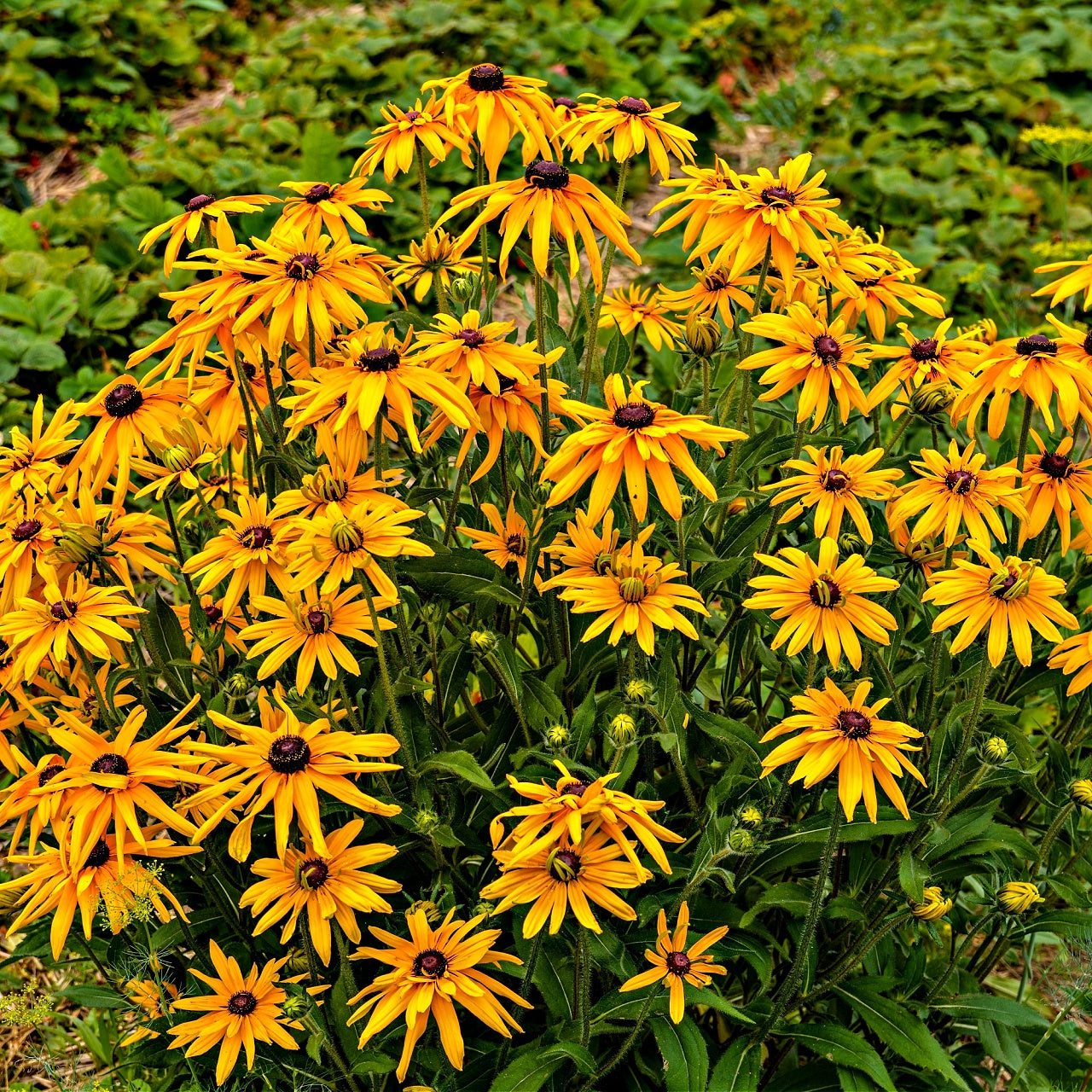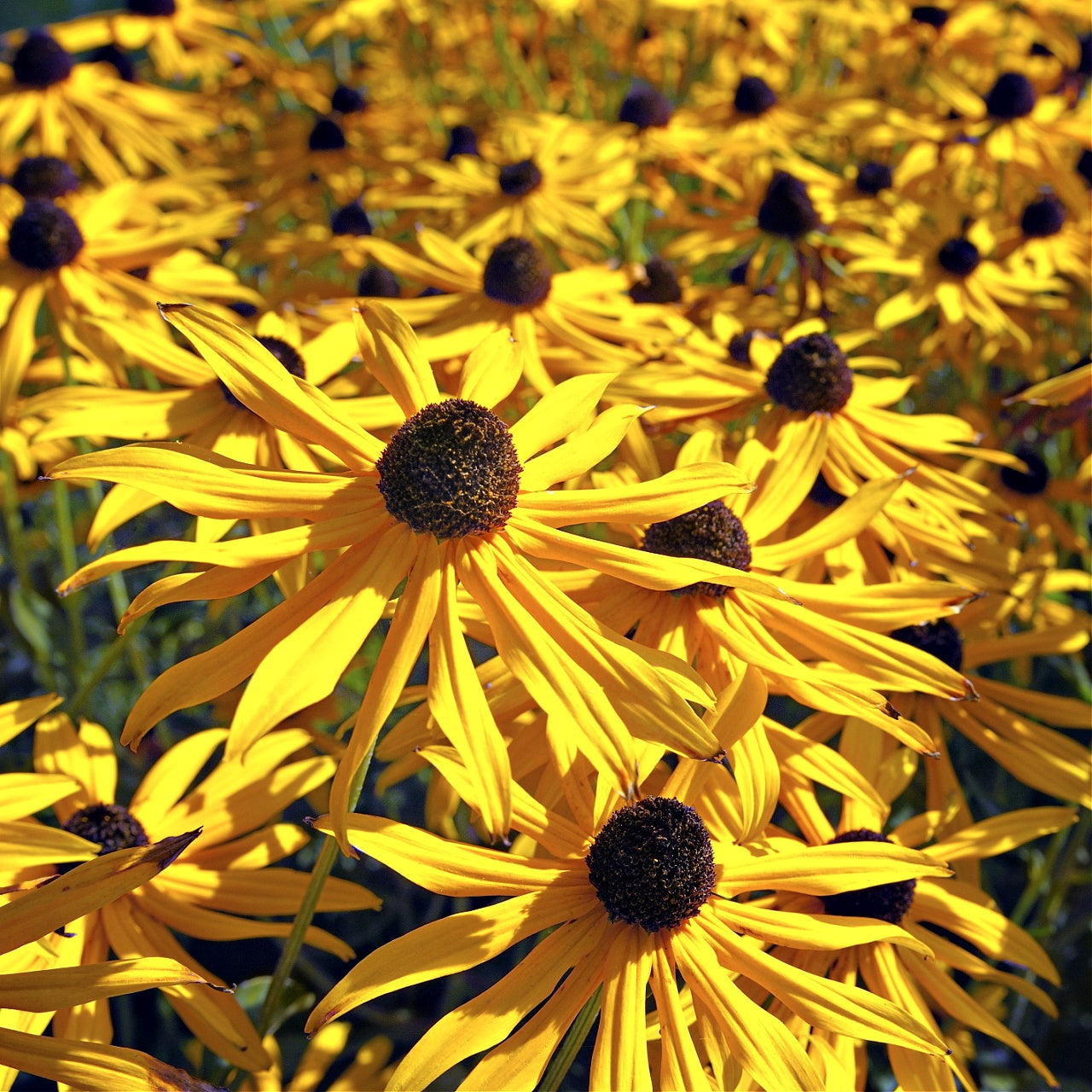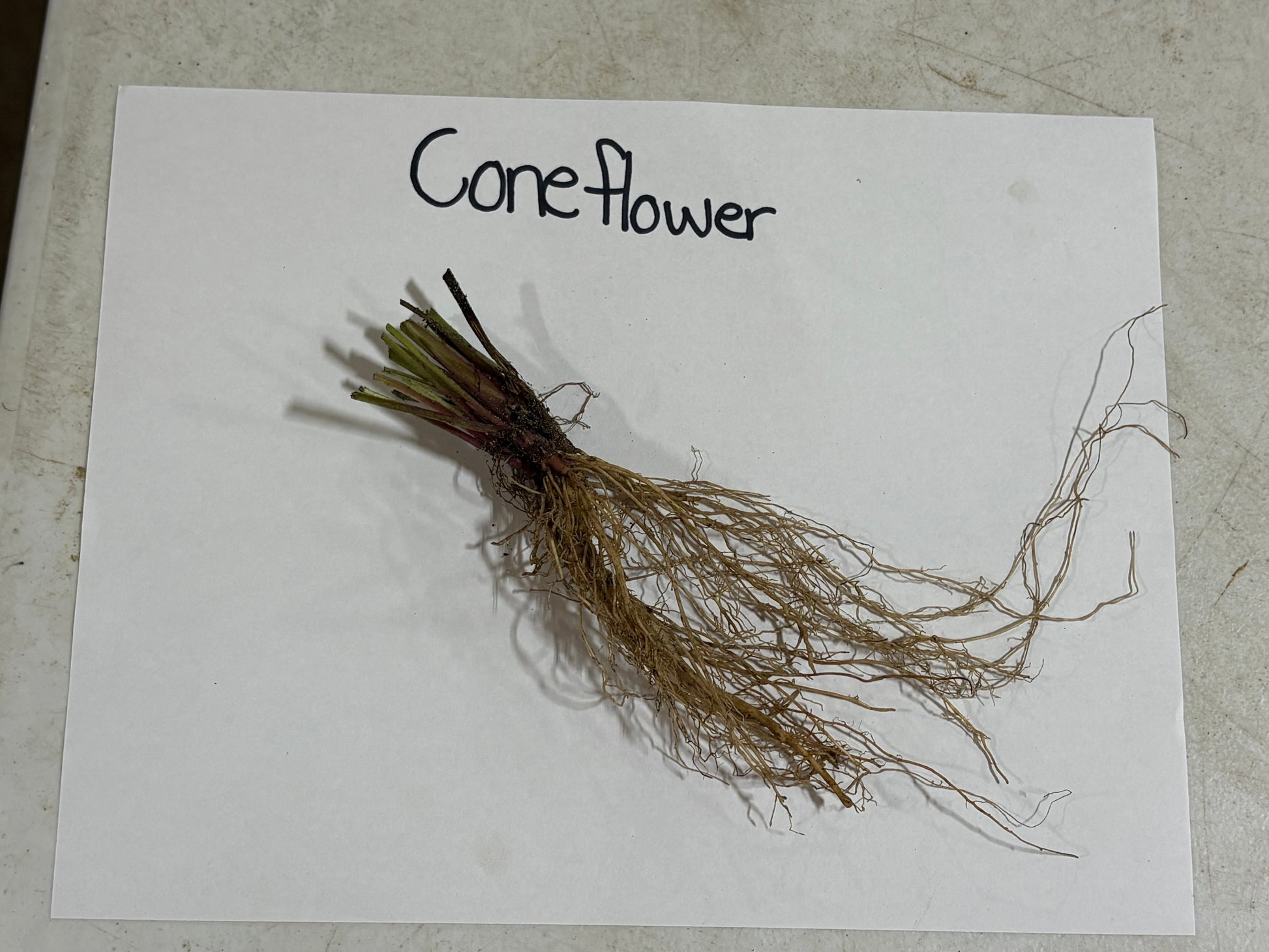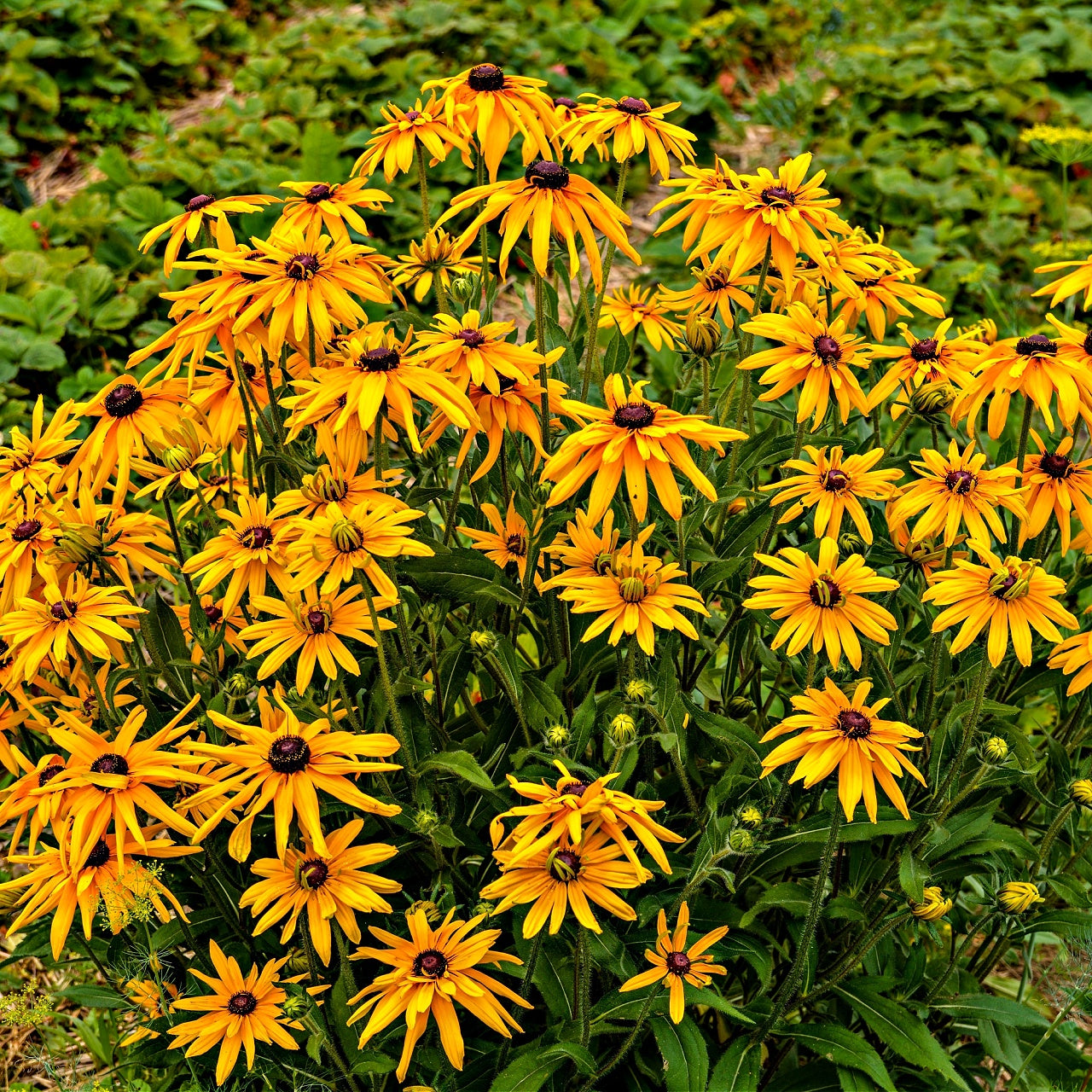
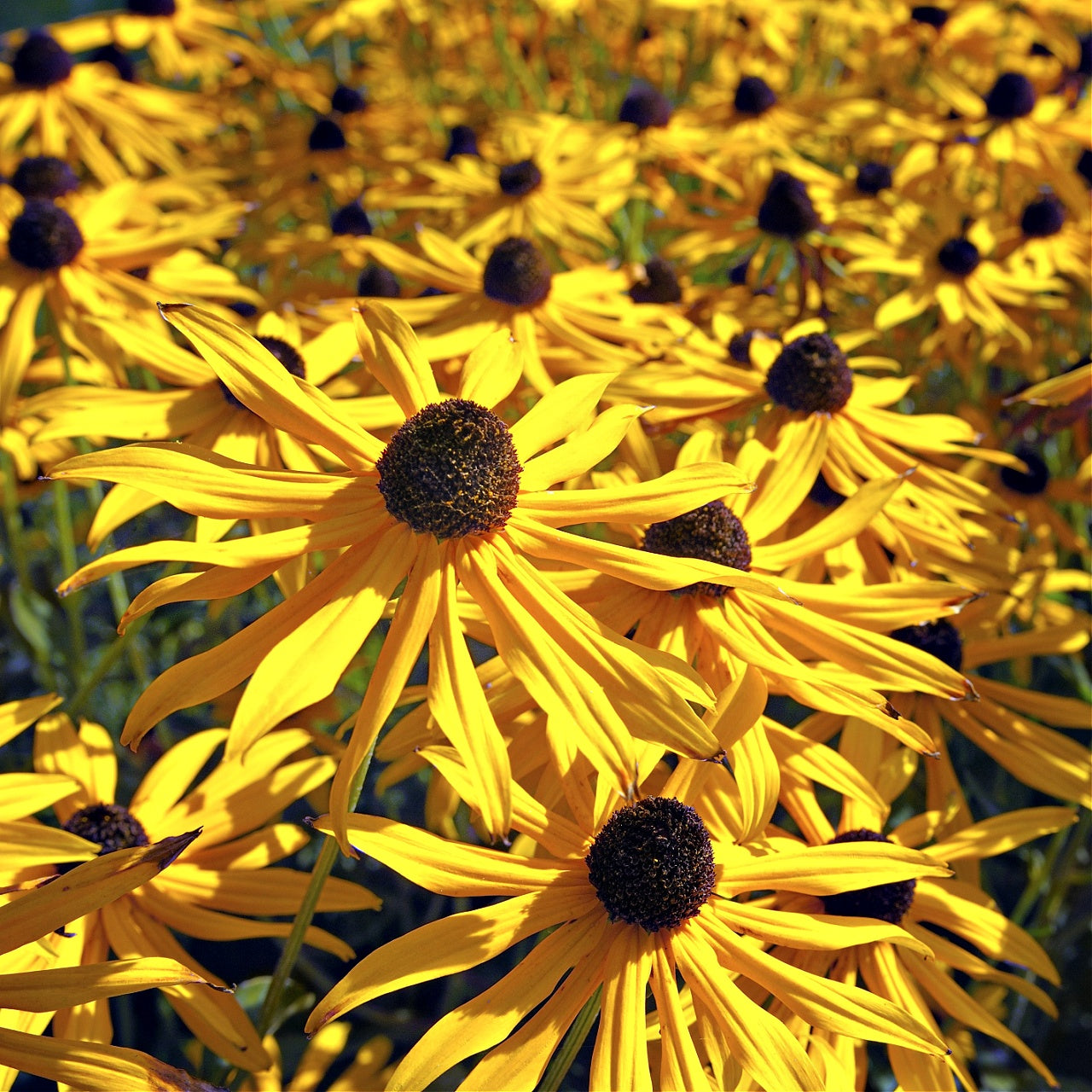

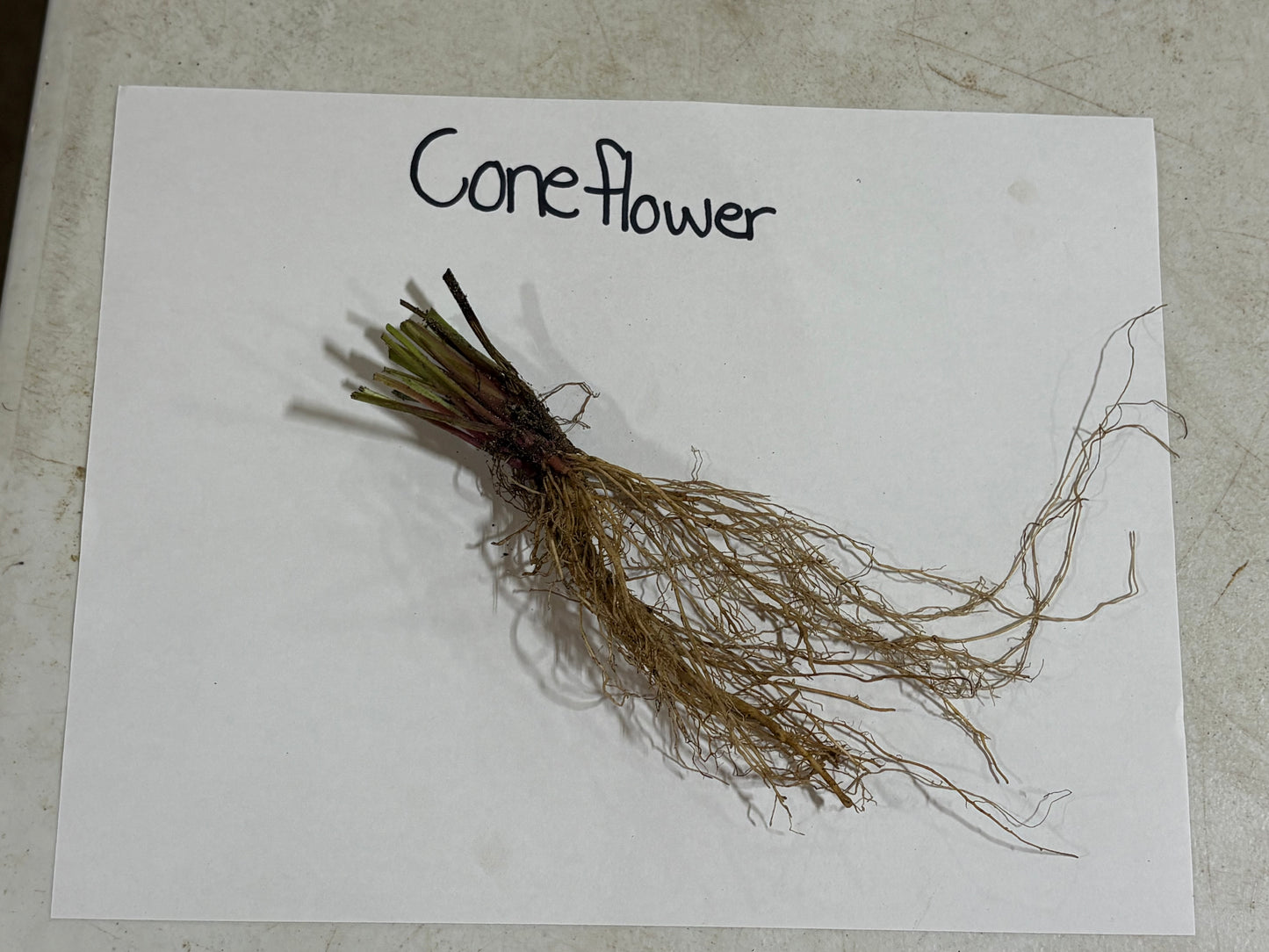
Removes & Absorbs Toxins
Improves Air Quality
Low maintenance & easy to grow
Yellow Coneflower Plants Also Known As Ratibida pinnata
Native to the Midwest portions of the United States, Yellow Coneflower perennial are a favorite of landscaping professionals. This tall, slender plant provides a prominent yellow hue for any garden design. Its cheerful and airy appearance, similar to a daisy, and its ability to grow in almost all soil conditions make it perfect for even the most novice homeowner.
The Yellow Coneflower Plants Appearance
This plant has distinctive flowers that develop at the apex of its various stems. Each plant has several soft yellow petals that droop down. At the center, a green cone appears in the early summer months and turns brown toward late fall. This low-maintenance, durable plant is heat and flood-resistant.
Benefits
The central cone hosts many seeds, which the plant uses for propagation. Many animals, including birds and butterflies, enjoy these seeds as tasty treats. The plant is deer and rabbit-resistant. With its fibrous root system and long taproots, it remains hardy and reblooms year after year.
Growth
The leaves are grainy to the touch and lance-shaped. With a dark green hue, they alternate along the plant's stem, with larger leaves appearing near the base. At full maturity, this bold yellow plant reaches a maximum height of just under two feet and spreads around one to two feet.
The Yellow Plants Many Uses
Yellow Coneflower plants are commonly chosen as a bordering plant because they provide yellow rays reminiscent of the sun and grow quickly. In its late season, the plant emits a fruity scent that is sure to please any garden visitor.
How To Plant Yellow Coneflowers
Planting Yellow Coneflowers is simple. Dig a hole twice as wide as the root ball, place the plant at the same depth it was growing in the pot, and gently press the soil back. Water well to help the fibrous roots establish quickly.
Best Planting Zones and Sunlight
This native perennial thrives in USDA planting zones 3 through 9. The best place to plant coneflowers is in a sunny spot that receives at least 6 hours of direct light each day. Too much shade can reduce flower production.
Best Time To Plant and Transplant
The best time to plant coneflowers is spring or fall when the soil is workable and temperatures are mild. Transplanting coneflower plants is also easiest during these seasons, giving roots time to adapt before harsh weather arrives.
Seeds and Natural Propagation
If you’re wondering when to plant coneflower seeds outdoors, the answer is spring after the last frost or fall so they can stratify naturally through winter. Yellow Coneflowers are not grown from bulbs, but from seeds and established plants.
Spacing and Growth Directions
Follow these native coneflower planting instructions for best results: space each plant 18 to 24 inches apart to allow good airflow and spreading. With proper care, they will multiply naturally and return year after year.
Temperature Needs
Coneflower seeds germinate best in soil with an ideal temperature around 65–70°F. Mature plants handle both heat and humidity very well, staying hardy through summer and fall.
Buying Yellow Coneflowers
Looking for coneflower plants for sale? At TN Nursery, we provide healthy, nursery-grown Yellow Coneflowers ready for planting. Gardeners often ask, how much do coneflower plants cost? Prices vary by size, but they are always an affordable perennial that delivers long-lasting beauty.
Frequently Asked Questions
How tall do Yellow Coneflowers grow?
They usually reach about 2 feet tall at maturity, with a spread of 1 to 2 feet.
How much sunlight do Yellow Coneflowers need?
They grow best in full sun, with at least 6 hours of direct light daily. Partial shade is tolerated but reduces blooms.
What planting zones are best for Yellow Coneflowers?
They thrive in USDA zones 3 through 9, adapting well to both cold winters and warm summers.
What is the best time to plant Yellow Coneflowers?
Spring and fall are the best times. The soil is workable, and roots establish more easily before extreme heat or cold.
How do you plant Yellow Coneflowers?
Dig a hole twice as wide as the root ball, set the plant at the same depth as the pot, fill the soil back in, and water well.
Can potted coneflowers be planted into the ground?
Yes, simply remove the pot, loosen the roots if compact, and place the plant in prepared soil.
Do Yellow Coneflowers grow from bulbs?
No. They grow from seeds and root systems, not bulbs.
When should I plant coneflower seeds outdoors?
Plant in spring after frost danger has passed, or in fall so seeds can naturally stratify during winter.
How far apart should Yellow Coneflowers be planted?
Space plants 18 to 24 inches apart for airflow and spreading room.
Are Yellow Coneflowers deer resistant?
Yes. They are naturally resistant to deer and rabbits, making them reliable for borders and open landscapes.
Do Yellow Coneflowers attract wildlife?
Yes. Butterflies, birds, and pollinators love their nectar and seeds. Goldfinches especially enjoy the seed heads in late summer and fall.
How much do Yellow Coneflower plants cost?
Prices vary by nursery and plant size, but they remain one of the most cost-effective perennials thanks to their durability and ability to rebloom each year.
This Is How Your Plants Will Look upon Delivery
Bloom Season
Bloom/Foliage Color
Yellow
Shipping date depends on the date displayed and chosen when you order from the product's page.
We do not offer warranties on products after 5 days past receiving your plants.
Our Blogs
By signing up, you agree with our privacy policy.



